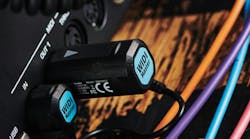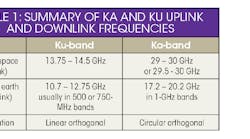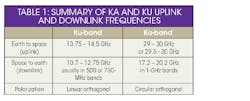Although Ka-band satellites have been around for more than 20 years, many early versions did not have commercial services. However, over the last few years, more commercial Ka-band satellites have been launched into space with powerful narrow beams that provide huge throughputs. Table 1 depicts the commercial Ku and Ka frequency bands.
Currently, Ka-band equipment is more expensive due to the high cost of Ka-band microwave power components and the higher accuracies required for waveguides, antennas, and antenna superstructures. Volume manufacturing has started to reduce this cost, making some low-power systems more affordable.
However, Ka-band does present some challenges, many of which can be mitigated by new high throughput satellites (HTSs) or with the proper design of the ground equipment. This article will look at the system impact of channel properties, including propagation and rain degradation.
Satellite Link Design
Simply due to physics, Ku- and Ka-band systems perform differently in terms of propagation loss, rain attenuation, increased noise during rain, low-noise-block-downcoverter (LNB) noise figure (NF), and antenna gains. Some of these differences cancel each other out, while others are mitigated with satellite design, earth station design, and/or link parameters.










